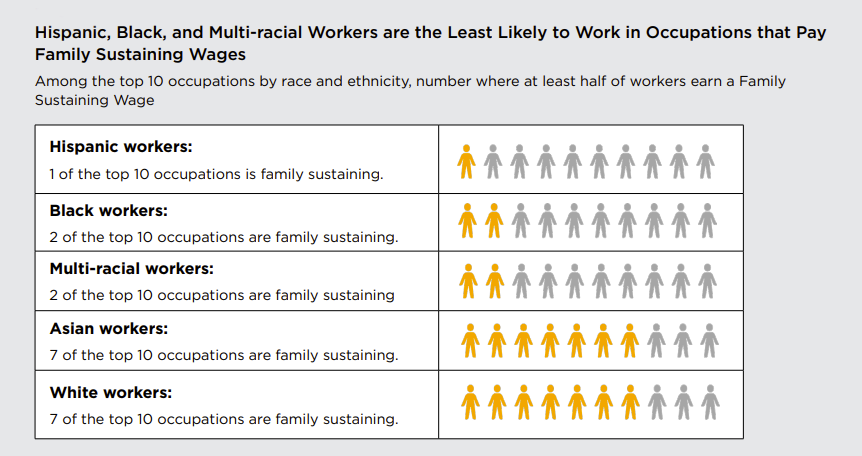Research released by the Center for Economic Inclusion and funded by the McKnight Foundation outlines how providing family sustaining wages for workers in essential jobs in Minnesota—most of them disproportionately held by women of color and essential to our community’s day-to-day operations—would also benefit employers and the larger Minnesota economy.
The report, Standing in the Gap: The Case for Family Sustaining Wages in Minnesota, illustrates the economic dividends paid to employers and the local business ecosystem—such as increased quality housing, childcare, transportation, and schools—when workers are paid a family-sustaining wage. The new research also makes recommendations for how both public and private sectors could make changes that raise wages in the occupations analyzed.
“Essential workers are vital to Minnesota’s culture and economy. Paying family-sustaining wages empowers workers and boosts statewide prosperity. By shining a light on Minnesota’s staggering wealth disparities in frontline occupations and providing practical suggestions for increasing wages, this report presents a pivotal opportunity for employers to invest in their communities and improve lives for people across Minnesota”– MUNEER KARCHER-RAMOS, VIBRANT & EQUITABLE COMMUNITIES PROGRAM DIRECTOR
In 2023, the family sustaining wage for a two-earner, two-child household in Minnesota reached $25/hour (Glasmeier, 2023). In 2024, following this research, MIT updated this to $29.43/hour. This underscores that the cost of living continues to rise every year and urgent action is needed to make progress on this issue. This wage, defined by the Center for Economic Inclusion based on data from the MIT Living Wage Calculator, is the minimum wage a family needs to support a family’s basic living expenses.
Black, Hispanic, and Indigenous Minnesotans are the least likely to be paid a family sustaining wage, with only one-third of all workers reporting hourly wages above the threshold. Yet the issue impacts all Minnesotans. Approximately three in four workers who are paid less than a family sustaining wage in Minnesota are White – meaning that almost one million White Minnesotan workers are not paid a family sustaining wage.

Racial wage and wealth disparities are largely driven by occupational segregation, the over-representation by race of workers in certain jobs. When looking at the top 10 occupations in Minnesota for each racial group:
- Only one of 10 top occupations for Latine workers have a median wage at or above a family sustaining wage
- Only one of 10 top occupations for Black workers have a median wage at or above a family sustaining wage
- The top two jobs for Black workers in Minnesota are care workers (personal health aides or nursing assistants), while the top job for White Minnesotans is managers
This report recommends changes to drive adoption of family sustaining wages in essential jobs that:
- Employ the greatest number of Minnesota workers
- Are over-represented by Black and Brown workers compared to the overall population
- Do not pay a family sustaining wage
As we work together to advance a future with shared power, prosperity, and participation for all Minnesotans, adopting this new wage goal is a powerful pathway to create a thriving economy that works for everyone.




